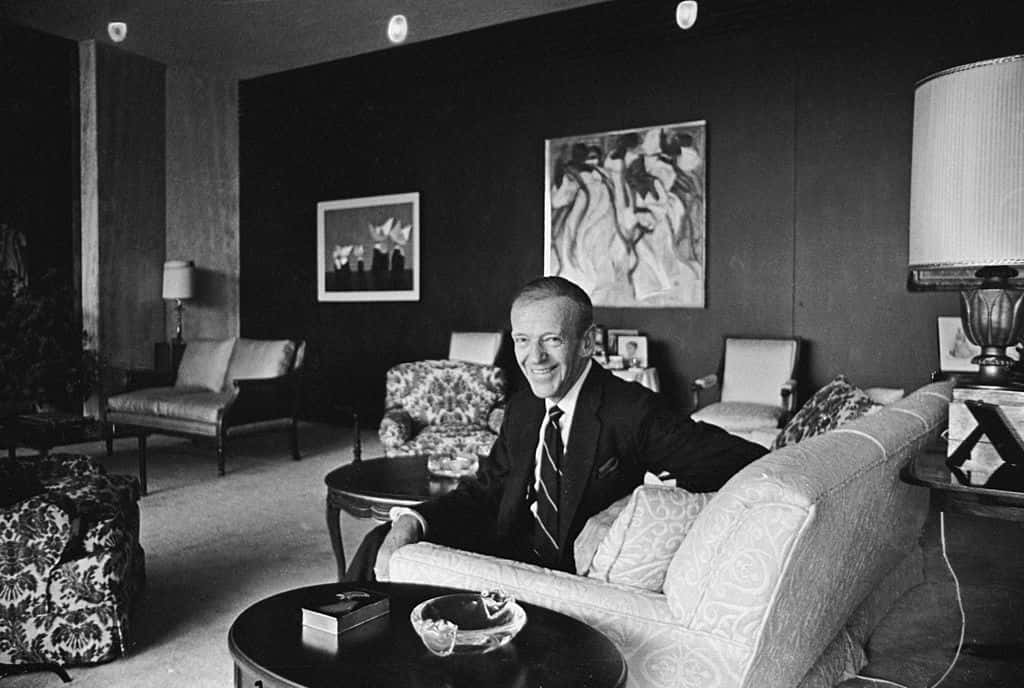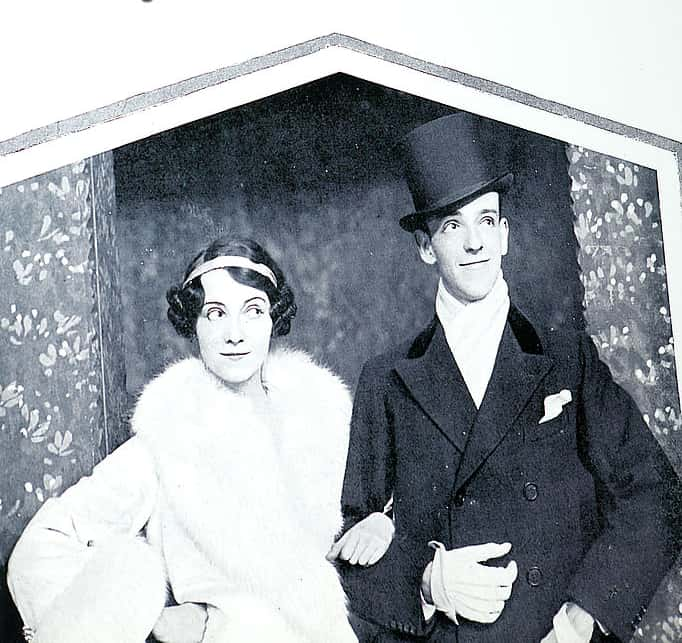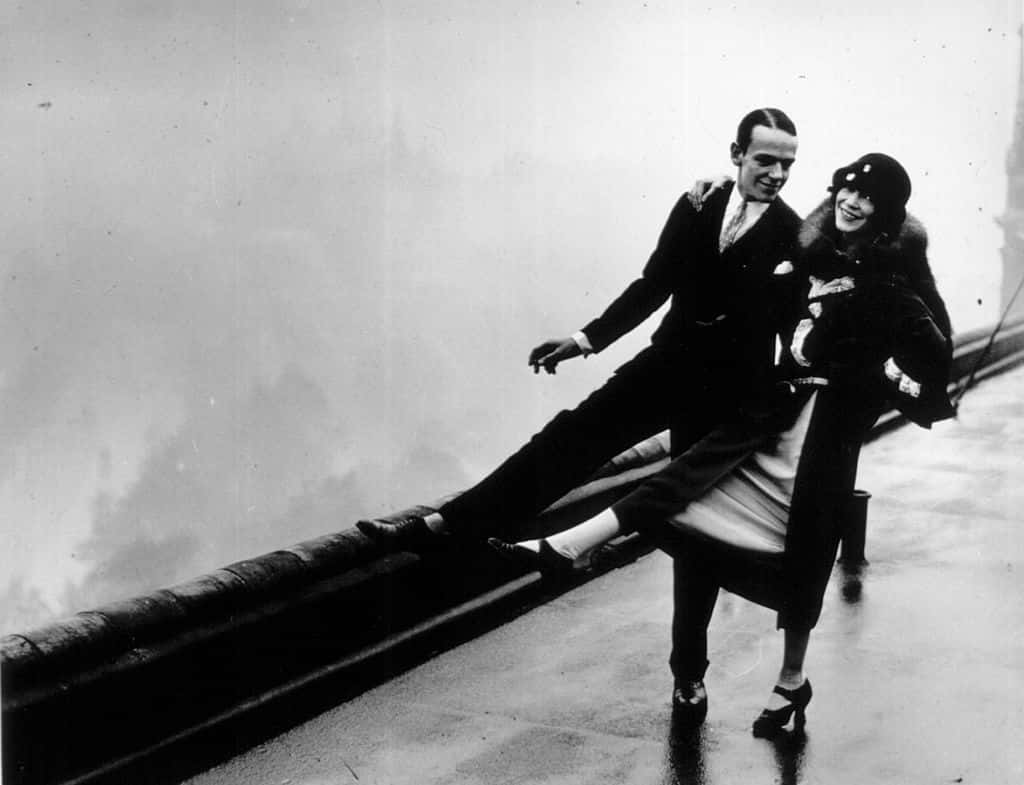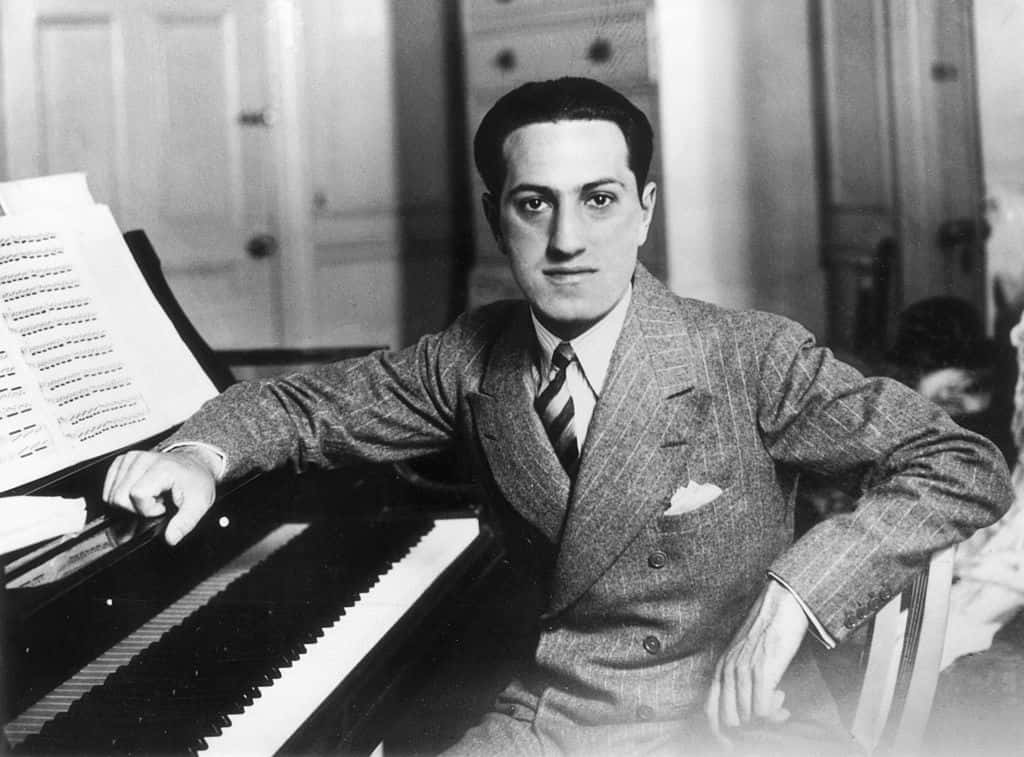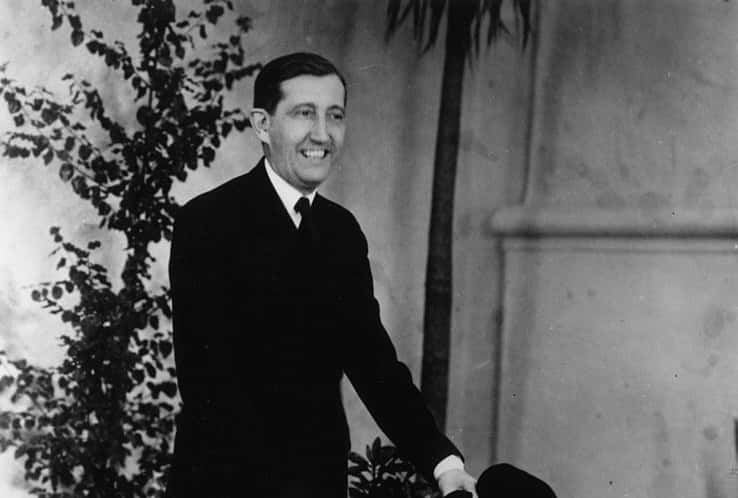Frederick Austerlitz (AKA Fred Astaire) was an American dancer, singer, actor, and choreographer on stage and in movies, best known for his on-screen partnership with Ginger Rogers in numerous musical comedies. He is viewed as one of the greatest dancers of all time and was a major influence on other iconic dancers and choreographers such as Gene Kelly, Rudolf Nureyev, Sammy Davis Jr., and Michael Jackson. Below are 42 facts about the iconic performer.
1. I Just Dance
Fred Astaire was known for his humility and didn’t like the idea of people trying to find some deep motivation to his art. When asked about dancing, he replied: “I have no desire to prove anything by it [dancing]. I never used it as an outlet or as a means of expressing myself. I just dance".

2. A Perfect Pairing
When Fred Astaire was just five years old, his mother got the idea that he and his sister Adele should form a vaudeville act. Realizing that they were a pretty talented team, their father moved them to New York City and they continued performing together until 1932, when Adele married Lord Cavendish of England.
3. Monkey See, Monkey Do
Amazingly, Fred Astaire refused to take formal dance lessons when he and his sister formed their act. Instead, he watched what Adele did and mimicked her, which as it turned out, he did with ease.
4. Astaire Would Be Better
Fred and Adele were born Austerlitz—their father was Austrian—but when they launched their vaudeville act, their father suggested they change it to Astaire. According to Astaire, his father thought the name sounded too much like the battle of Austerlitz, which was a defeat for Austria in the Napoleonic wars, and it wouldn’t have sounded good on theater marquees.
The name Astaire allegedly came from a French relative on their mother’s side with the name L’Astaire, and from then on, that’s how the pair was billed. That’s definitely better.
5. Somewhat Lopsided
The trouble with kids is that you can never predict how much one child may grow over the other, and Adele grew three inches taller than her brother making them look somewhat odd together. The family wisely decided to take a break and let Fred catch up, but also to avoid problems with the Gerry Society, who were the equivalent of today’s Child Protective Services.
6. Disguising a Flaw
Fred Astaire was reportedly extremely self-conscious about what he perceived to be his overly large hands. In order to hide this flaw, he would curl his middle two fingers when he was dancing. You’d think that would be pretty uncomfortable!
7. A Different Sort of Hero
Before Fred Astaire came along, the average Hollywood screen hero was wealthy, titled, and formal. Astaire’s characters broke the mold. They were ambitious, self-taught, and determined to make something of themselves. They gave the average American hope that they didn’t need to be born wealthy or noble to achieve something, and this new man resonated with the Depression-era audience.
8. Just Being Comfortable
Fred Astaire frequently found himself on lists of the 10 best-dressed men in the world, but he just couldn’t see it. As he told GQ in a 1957 interview, “it always comes as a surprise to me. I never think of myself as spic and span or all duded out—just as someone who wants to be comfortable and satisfy his own taste".
9. Puttin’ on the Ritz
Fred Astaire’s trademark onscreen look was a top hat, tails, and a white tie, making him a style icon. The inspiration for his look came from an encounter with Edward VIII, Prince of Wales, and his sophisticated and tailored manner of dressing. After that, he started visiting luxury retailers in London to develop the look for himself.
10. Second Fiddle
Adele Astaire’s retirement from stage might have been the best thing to ever happen to Fred. During their time together, Adele was the more popular one of the pair, even inspiring a critic from the Chicago Herald-Examiner to profess his love for her in a headline for the paper. When Fred Astaire started performing without her, critics were initially skeptical about his talent, but were soon won over.
11. Lifetime Achievement
Not surprisingly, Fred Astaire was honored more than once for his amazing career. In 1949, he was given an honorary Oscar for ''his unique artistry and his contributions to the technique of musical pictures,” and in 1978, he received a Kennedy Center Honor. Three years after that, in 1981, the AFI gave him a lifetime achievement award, at which he wholeheartedly thanked his sister Adele, without whom, he said, he wouldn’t be in show business. And what a loss that would have been!
12. Part of the Plot
The early Hollywood dance films had a very different look than how dance is presented today, and that’s all thanks to Astaire. He insisted that dance become part of the plot and move the story forward, rather than just a spectacle. He also came up with a new way of filming dance sequences, which was to fit both dancers in the frame and present the dance itself, rather than just the faces and partial moves of old.
13. A New Hobby
Astaire was always a physically active man, and when he retired from dancing in his late 70s, he took up skateboarding! Thanks to the recognition he brought this fledgling sport, Astaire was awarded a lifetime membership to the National Skate Board Society of America. Unfortunately, he had to give up the sport when at age 78, he fell and broke his wrist.
14. A Dream Come True
When Astaire was 14, he became friends with a 15-year-old aspiring songwriter by the name of George Gershwin. Gershwin was already working for a music publisher and the boys fantasized about Gershwin one day writing a musical for Astaire. Little did they know that their dreams would be realized roughly a decade later with 1924’s Broadway hit Lady Be Good, followed by Funny Face in 1927.
15. Practice, Practice, Practice!
Like many artists, Astaire was highly detail-oriented and a major perfectionist when it came to his work. Before a movie could start filming, he had to have at minimum a few weeks and even a few months-worth of rehearsals. He was also well-known for insisting on numerous retakes, once stating: “I’ve never yet got anything 100% right. Still, it’s never as bad as I think it is".
Truer words were never spoken!
16. Not Impressed
One of the most popular legends surrounding Astaire is the alleged response from the producers who saw his first screen test at RKO studios. The notes on Astaire supposedly read “Can’t Act. Slightly Bald. Also Dances". Luckily, the real decision maker was David O. Selznick, who was rightfully impressed with Astaire’s dancing, and signed him to a contract.
17. Seal of Approval
Russ Tamblyn, who played the role of Riff in the film version of West Side Story, confessed that he had not been pleased with his dancing in the film. He had a change of heart after being approached by none other than Fred Astaire at the premiere, who told him that he admired his dancing in it.
18. Following in His Footsteps
Astaire’s magical feet inspired numerous young dancers, including the legendary choreographer Bob Fosse. When Fosse started out, Fred Astaire was his idol, and he dreamt of following in his footsteps and being just like him. Later on, when he realized that there was always someone giving dancers and choreographers orders, he decided to direct instead.
19. Encouraging Words
As effortless as Debbie Reynolds’ dancing looks in Singin in the Rain, it likely wouldn’t have happened without a timely encounter with Fred Astaire. As Reynolds recounts in her memoir, she was given three months to learn how to dance and was finding it a struggle. One day, she was so frustrated that she was lying under the piano crying her eyes out, and suddenly, a voice asked her why she was crying.
That voice belonged to Astaire, who invited her to watch him in rehearsal for Royal Wedding. After witnessing Astaire’s own frustration and anger while he worked on his routines, she realized that if dancing was hard for him, it was hard for everyone, and was able to pick herself up and complete the scene.
20. A Little Too Mannish
One of Astaire’s early on-screen partners was Eleanor Powell, who was such a good dancer that few partners were ever in her league. Even Astaire found dancing with her difficult, once telling reporters: “I love Eleanor Powell, but she dances like a man. She’s a remarkable dancer, but she has a very mannish style, and she’s a little big for me".
21. We Need Another Cane!
In the finale of Top Hat, Astaire uses the cane as a weapon, attacking the supporting dancers. The costume department prepared 13 canes for the scene, which turned out to be a good thing, because Astaire was constantly breaking the canes in frustration whenever he made a mistake—which was often, in his view. He broke so many that the crew was concerned that they would run out of canes before they finished filming, but luckily, the scene was completed with the final cane.
22. Dazzling Duo
Even the greatest of the great can have heroes, and Astaire’s heroes were the tap duo of brothers Fayard and Harold Nicholas. Astaire once referred to their dance sequence in Stormy Weather as “the greatest dance number ever filmed,” which, coincidentally, the brothers also noted as their favorite of their 30 films.
23. Twice in a Lifetime
Gene Kelly is often mentioned in the same breath as Astaire as being the best dancers of the 20th century, but the two men only danced together onscreen twice. The first time was in 1945, in the movie Ziegfeld Follies, where they performed a Gershwin number that Astaire had originally performed with his sister in the 1927 musical Funny Face.
The second time came 31 years later in the 1976 film That’s Entertainment II, which was also Astaire’s last film appearance.
24. Can’t Help Himself
When the 77-year-old Astaire agreed to narrate and star in That’s Entertainment II, it was on the condition that he not have to dance. Once he and Kelly got together however, he just couldn’t resist the urge, and Kelly choreographed their song and dance number for the film.
25. Lucky Break
Fred Astaire was not originally slated to star in the classic film Easter Parade, but ended up doing the film as a favor to Gene Kelly who was forced to drop out after breaking his ankle playing volleyball. Astaire was retired at the time, but jumped at the chance to work with Judy Garland and happily agreed to star.
 Easter Parade,Metro Goldwyn Mayer
Easter Parade,Metro Goldwyn Mayer
26. Parting Company
The completion of their 1939 film The Story of Vernon and Irene Castle was the last time Astaire and Rogers partnered together for a decade. Rogers was itching to break out of comedy and try some more dramatic roles, and Astaire didn’t want to be stuck with a permanent partner anymore. Astaire went on to co-star with other dancers like Rita Hayworth and Cyd Charisse, but those pairs found it hard to capture the magic he’d had with Ginger!
 The Story of Vernon and Irene Castle,RKO Pictures
The Story of Vernon and Irene Castle,RKO Pictures
27. Protecting His Image
After his passing, Astaire’s widow Robyn Smith worked hard to protect his name and image. Over the years she filed several lawsuits to keep his name and face from being used without her permission, but in 1997 she caved and gave permission for clips of his dancing to be modified for use in a series of vacuum cleaner commercials.
28. A Set Structure
Nothing was ever left to chance or improvisation in an Astaire film, with the star literally creating a chart for each movie outlining how long into the film the first dance number should occur, and the exact timing for the non-musical intervals between each number after that.
29. Preserving His Technique
It was supremely important to Astaire that his dancing techniques be preserved and shared with the world, so in 1947, he co-founded a chain of dance studios under his name where he could do just that. As he once said of dancing: “Some people seem to think that good dancers are born…All the good dancers I’ve known have been taught or trained. To me, dancing has always been fun. I enjoy every minute of it. I am glad that I can now put my knowledge to use in bringing personal confidence and a feeling of achievement to so many people".
30. Introduce Us First!
The set of Easter Parade was the first time that Judy Garland and Fred Astaire ever met, but even though she was a star in her own right, Garland was terrified to speak to him until someone properly introduced them.
 Easter Parade,Metro Goldwyn Mayer
Easter Parade,Metro Goldwyn Mayer
31. Autobiographical
The character Astaire played in the 1953 film adaptation of the play The Bandwagon was almost parallel to what was happening in Astaire’s real life. Tony, his character in the film, is a fading star whose career is on a downturn. At the time, the same was true of Fred Astaire, who was 54 and whose career was at a standstill.
 The Band Wagon,Metro Goldwyn Mayer
The Band Wagon,Metro Goldwyn Mayer
32. With Him in Mind
Songwriter Irving Berlin once said that the songs he wrote for Astaire were different than his other songs, because he wrote them with Astaire in mind. He considered the music he wrote for the Astaire-Rogers movies to be dance music, and most of the lyrics had something to do with dancing.
33. Kung Fu Feet
Jackie Chan named Fred Astaire and Gene Kelly as two of his biggest influences on the fight choreography in his movies. He particularly appreciated the way that their films would feature several unedited minutes of them singing and dancing without the camera tricks and explained that that effect was what he wanted for himself.
34. King of Dance and King of Pop
A modern performer whom Astaire particularly admired was the King of Pop, Michael Jackson. After seeing him in a television performance, Astaire called Jackson to congratulate him, telling him “You’re a [heck] of a mover".
35. We’ve Already Got Him
In order to convince both Fred Astaire and Audrey Hepburn to star in Funny Face, the producers told each that the other was already signed. They took a leap and assumed that they would jump at the chance to work together, and it turned out they were right!
36. May-December Romance
Astaire remained a widow for over 25 years, before surprising friends and family with a marriage to the jockey Robyn Smith. Smith was more than 40 years younger than Astaire, but the pair both had a love of horses in common, and their shared interest led to romance. They remained together until Astaire’s death in 1987.
37. Remembering Him Fondly
Astaire was such a beloved figure that even then-president Ronald Reagan publicly remembered the legend. Upon learning of his death, Reagan said “'Fred was, in every sense of the word, a superstar. He adapted a witty, sophisticated, casual air which belied the enormity of his talent.'' High praise for a guy who could supposedly only dance a little!
38. His Heart Was Set on Her
Astaire married his first wife, the 25-year-old divorcee and socialite Phyllis Potter, in 1933—but she didn’t just fall into his arms. He pursued her for two years over the objections of his mother and sister. They ended up having two children and staying together for 21 years, until her demise from lung cancer in 1954. How tragic!
39. Unfounded Rumors
Kelly was roughly 20 years Astaire’s junior, and the media loved to play up a non-existent rivalry between the two. Journalists even went so far as to suggest that when Astaire announced his retirement in 1946, it was because he couldn’t keep up with Kelly. In reality, he retired because his wife of 21 years had just passed away, and he was grieving and unable and unwilling to work.
40. Tried and Failed
The pairing of Astaire and Judy Garland in Easter Parade was so successful that MGM immediately wanted to partner them again in another film. The first attempt came immediately following Easter Parade and The Pirate (which she was working on simultaneously) with The Barkleys of Broadway, but she was so frequently absent due to illness that the studio had to remove her and replace her with Ginger Rogers.
The second attempt came in 1950 with Royal Wedding, but she suffered another mental collapse and once again the studio was forced to release her from her contract.
 Easter Parade,Metro Goldwyn Mayer
Easter Parade,Metro Goldwyn Mayer
41. Reluctant Partnership
Astaire and Ginger Rogers starred together in 10 films between 1933 and 1949, with the pair becoming one of Hollywood’s most adored on-screen couples. Funnily enough, if Astaire had gotten his way, they never would have worked together at all. When he first found out about their intended pairing, he sent a telegram to his agent complaining “I’ve just managed to live down one partnership (Adele) and I don’t want to be bothered with anymore".
42. Keeping Up the Pace
Astaire may have appeared effortless whenever he danced onscreen, but behind the scenes, it was a different story. Astaire was a notorious perfectionist, and was incredibly tough on himself. He could do as many as 30-40 takes of a shot to get it just right. Rogers was the only of his partners to match him step for step, and after doing 54 takes of one shot on their films, she had literally bloodied her shoes from burst blisters.
Don’t feel too sorry for her though—she was as much of a perfectionist as her partner, which is probably why they were so great together on screen.
Sources: 1, 2, 3, 4, 5, 6, 7, 8, 9, 10, 11, 12, 13, 14, 15, 16, 17, 18, 19, 20, 21, 22, 23, 24, 25, 26, 27, 28, 29








